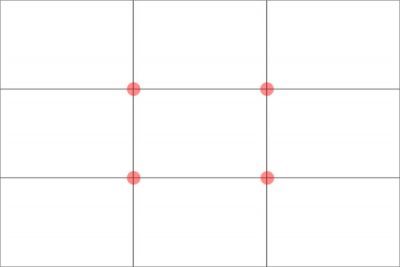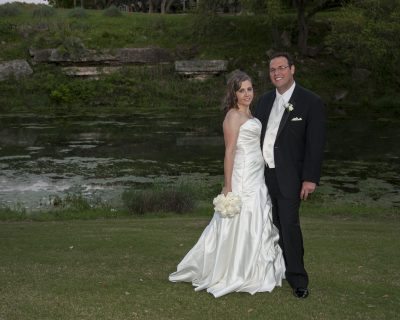Rule of Thirds
Considering the rule of thirds is perhaps the most popular way of composing an image.
What is the Rule of Thirds?
You should see the rule of thirds as the default choice of composition for most photographers, the most popular guideline. Basically, it dictates that, during the process of composing a photograph, the frame should be divided into nine equal rectangles by four intersecting lines, two of which cut the frame into thirds vertically, the other two – horizontally. A popular 3:2 frame would be divided thus:
Rule of Thirds
As you may gather, a square frame would be divided into nine smaller equal squares. The elements of importance within a given frame should be placed at the intersection points of these lines, as shown in the above scheme. So, for example, a landscape image composed perfectly according to the rule of thirds would mean the horizon placed at either one third of the frame from the bottom, or one third from the top.

It is important to keep in mind that the rule of thirds can also be followed when using other composition guides. For example, I left quite a lot of space at the top of the frame with this portrait and although the bride’s eyes are still centered along the vertical axis, they are placed at the third of the frame horizontally:
Why is It so Popular?
Rule of thirds is a derivative of the very well known golden mean, a composition and ratio guideline based on the Fibonacci sequence. And, if you are surprised to find art and math have something in common, don’t be – the golden mean has been known for thousands of years now. Be that as it may, golden mean is a ratio that people find to be particularly pleasing and natural. Basically, it is considered to define perfect proportion and is also found not only among objects of art, but also in nature.

So, because the rule of thirds is a derivative of the golden ratio, it is easy to understand why we find it to be so pleasing to the eye. But that’s not the main reason for its popularity. You see, the perfect ratio that I mentioned is approximately 1:1.619 and, as you understand, isn’t particularly easy to visualize when composing a photograph through the viewfinder. In comes the rule of thirds with its simplified divide-into-three-equal-parts approach. It’s much easier to apply in the field. It still is a bigger part of the aesthetic appeal of the golden ratio. That is what makes it so accessible and usable by the majority of photographers, and not just beginners.
As you can see from my the images, I apply the guide myself frequently. Having said that, rules are meant to be broken. Sometimes an image needs to be right in the center. It depends on the story you are telling. Photography is a story.
Final Words
The rule of thirds is certainly worth learning. Yes, it may be the guide for the masses, but rightfully so – it’s both easy to learn and effective. However, whether you should always meticulously follow the guide is a different question altogether. I would suggest you experiment and search for what seems to be the best composition. You don’t need this for every photograph you take and so it’s not the default choice. If learning the rule of thirds is a step in the right direction, knowing when not to apply it is a leap in comparison.